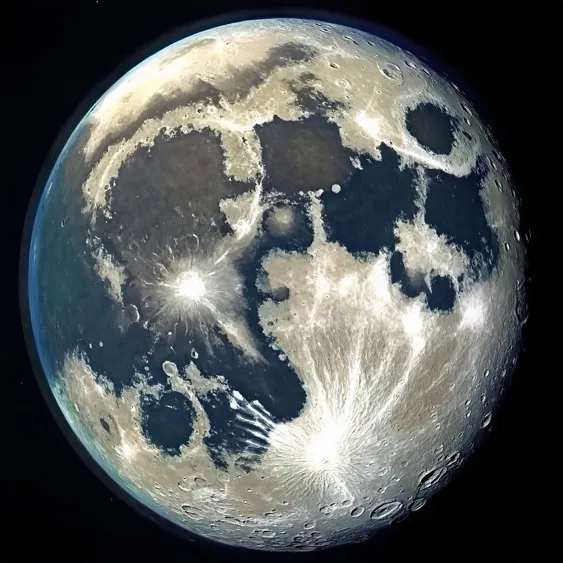Chang'e 6 Reveals Moon's Geological Secrets

In the fast-evolving field of lunar exploration, the recent findings from China's Chang'e 6 mission have sparked significant interest and curiosity worldwide. With the analysis of basalt samples gathered from the far side of the Moon, researchers are peeling back layers of history that could reshape our understanding of lunar geology and the Moon's evolutionary path. This announcement not only exemplifies China's advancements in space technology but also reflects a broader global trend of increased interest and investment in lunar science, highlighting the Moon's potential as a resource and scientific frontier.
The Chang'e 6 mission has provided a unique opportunity to study the unusual geological characteristics of the Moon's far side, particularly the South Pole-Aitken Basin. Unlike the lunar near side, which has been extensively studied through past Apollo missions, the far side remains an enigma, presenting a stark dichotomy in its mineral composition, topography, and oxidation states. Researchers utilized advanced tools, like the Spinel V fugacity meter, to measure the fugacity of oxygen in 23 basalt fragments. Their findings suggest that the average oxygen fugacity in the basalt from Chang'e 6 is significantly lower than that of Apollo and Chang'e 5 samples, indicating a more reduced mantle source in the far side, which might have implications for the Moon's formation and evolution as a whole.
These investigations underscore two possible mechanisms of differentiation between the Moon's far and near sides: one related to the asymmetric crystallization of the magma ocean leading to distinct oxidation states, and another tied to the massive impact event that shaped the South Pole-Aitken Basin. While proving these theories poses its own challenges, the implications of these findings are profound. For example, if different regions of the Moon have experienced contrasting geological processes, this could affect our theories on its thermal evolution and influence future lunar exploration strategies.
As we stand on the brink of a new era in lunar science, these findings remind us that the Moon is not just a silent witness to Earth's history, but a dynamic body with a complex geological story to tell. How might future missions further unravel these mysteries and what technologies will be crucial in this unfolding narrative?
Read These Next

Scientists discover immune cells driving chronic sinus infections
A Tsinghua University study reveals Granzyme K's role in chronic sinusitis, suggesting new therapy targets for better treatment.

'Panda Eye': Humanoid Robotics Meets Sports
Commentary on the opening of the 'Panda Eye' humanoid robot training facility in Beijing, focusing on its significance in merging sports with robotics and engaging public interest.

OpenAI's GPT-5: Achieving 'PhD Level' AI Expertise
This article discusses OpenAI's announcement of GPT-5, its claimed advancements to PhD-level capabilities, and its implications for education, industry, and ethics in AI.
